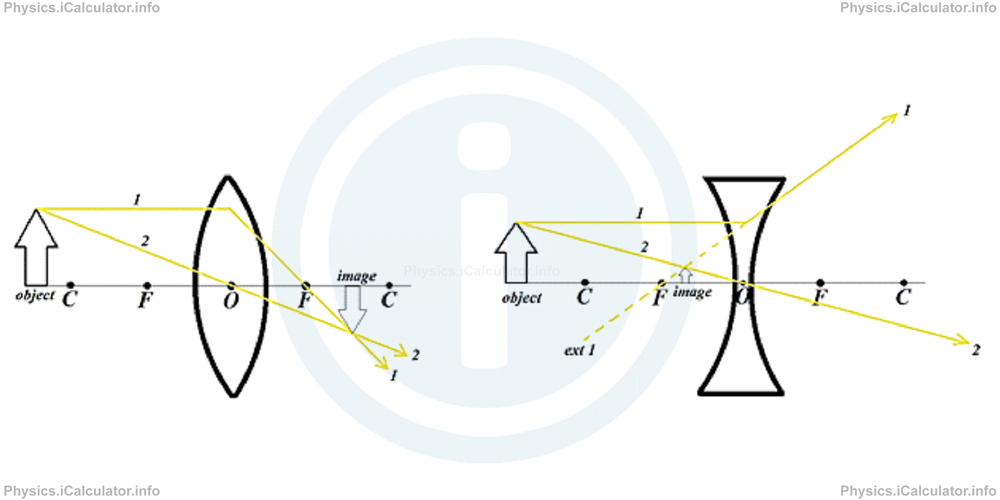Menu
Physics Lesson 12.9.2 - Special Rays in Lenses
Please provide a rating, it takes seconds and helps us to keep this resource free for all to use
Welcome to our Physics lesson on Special Rays in Lenses, this is the second lesson of our suite of physics lessons covering the topic of Lenses. Equation of Lenses. Image Formation of Lenses, you can find links to the other lessons within this tutorial and access additional physics learning resources below this lesson.
Special Rays in Lenses
Like in spherical mirrors, we have to use the special rays to build up the image in lenses. However, in this case, two special rays are enough to build the image. They are:
- The ray that originates from the top of object, is incident to the lens in parallel to the principal axis and after refracting through lens, it passes through focus in converging lenses while in diverging lenses the extension passes through focus.
- The ray that originates from the top of object, passes through the middle of lens (point O) then moves away without changing direction, as is normally incident to the lens surface.
The two special rays used in lenses are shown in the figure below.

You have reached the end of Physics lesson 12.9.2 Special Rays in Lenses. There are 8 lessons in this physics tutorial covering Lenses. Equation of Lenses. Image Formation of Lenses, you can access all the lessons from this tutorial below.
More Lenses. Equation of Lenses. Image Formation of Lenses Lessons and Learning Resources
Whats next?
Enjoy the "Special Rays in Lenses" physics lesson? People who liked the "Lenses. Equation of Lenses. Image Formation of Lenses lesson found the following resources useful:
- Rays Feedback. Helps other - Leave a rating for this rays (see below)
- Optics Physics tutorial: Lenses. Equation of Lenses. Image Formation of Lenses. Read the Lenses. Equation of Lenses. Image Formation of Lenses physics tutorial and build your physics knowledge of Optics
- Optics Revision Notes: Lenses. Equation of Lenses. Image Formation of Lenses. Print the notes so you can revise the key points covered in the physics tutorial for Lenses. Equation of Lenses. Image Formation of Lenses
- Optics Practice Questions: Lenses. Equation of Lenses. Image Formation of Lenses. Test and improve your knowledge of Lenses. Equation of Lenses. Image Formation of Lenses with example questins and answers
- Check your calculations for Optics questions with our excellent Optics calculators which contain full equations and calculations clearly displayed line by line. See the Optics Calculators by iCalculator™ below.
- Continuing learning optics - read our next physics tutorial: Power of Lenses. The Human Eye
Help others Learning Physics just like you
Please provide a rating, it takes seconds and helps us to keep this resource free for all to use
We hope you found this Physics lesson "Lenses. Equation of Lenses. Image Formation of Lenses" useful. If you did it would be great if you could spare the time to rate this physics lesson (simply click on the number of stars that match your assessment of this physics learning aide) and/or share on social media, this helps us identify popular tutorials and calculators and expand our free learning resources to support our users around the world have free access to expand their knowledge of physics and other disciplines.